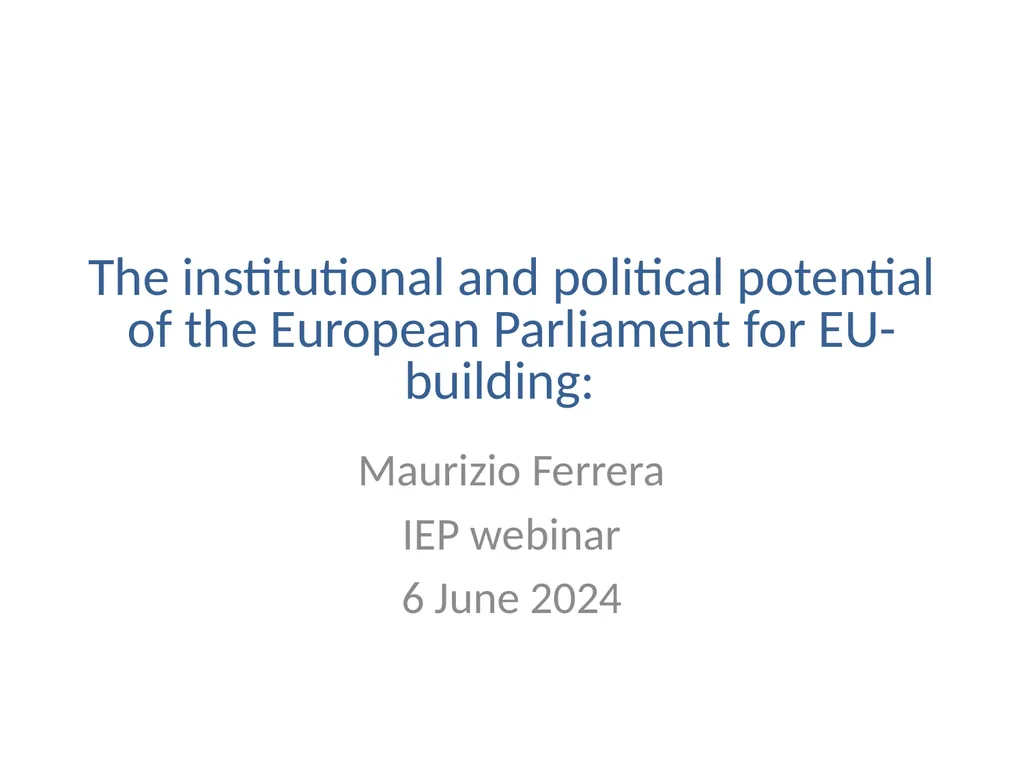The institutional and political potential of the
Author : tatiana-dople | Published Date : 2025-11-08
Description: The institutional and political potential of the European Parliament for EUbuilding Maurizio Ferrera IEP webinar 6 June 2024 A colegislator The codecision procedure Council Parliament was introduced by the Maastricht Treaty 1992
Presentation Embed Code
Download Presentation
Download
Presentation The PPT/PDF document
"The institutional and political potential of the" is the property of its rightful owner.
Permission is granted to download and print the materials on this website for personal, non-commercial use only,
and to display it on your personal computer provided you do not modify the materials and that you retain all
copyright notices contained in the materials. By downloading content from our website, you accept the terms of
this agreement.
Transcript:The institutional and political potential of the:
The institutional and political potential of the European Parliament for EU-building: Maurizio Ferrera IEP webinar 6 June 2024 A co-legislator The codecision procedure (Council + Parliament) was introduced by the Maastricht Treaty (1992), and extended and made more effective by the Amsterdam Treaty (1999). With the Lisbon Treaty that took effect on 1 December 2009, the renamed ordinary legislative procedure became the main legislative procedure of the EU´s decision-making system. Legislative measures must be approved by both Council and Parliament. It applies to around 85 policy areas. A king co-maker In 2009 the Treaty of Lisbon introduced a new procedure for the formation of the Commission. According to Article 17(7) of the Treaty on European Union (TEU), the Commission President is elected by Parliament by a majority of the component Members in a process in which the European Council, acting by qualified majority and taking into account the elections to the European Parliament, proposes a candidate to the European Parliament. The Spitzenkandidaten is a political process requiring that, before the European elections, the European political parties designate the personality they would propose as President of the Commission or who could marshal a parliamentary majority. This personality would campaign in the Member States, presenting the political programme of their own political party. The lead candidate process aims at establishing a political link between Parliament and the executive. Persisting weakness, but.. Despite advancements, still weaker institution compared with (European) Council E.g. marginal role in the euro-zone crisis OLP does not apply in key policy domains common foreign and defence policy, institutional reforms, tax policy, a fair share of social policies and a number of areas in the field of justice and home affairs Yet increasing political salience «Go-to body» for EU leaders: accountability Increasing exercise of voice: political influence A partisan institution Only institution representing citizens Articulated in political groups, closely connected to euro-parties MEPS are elected through national party lists… But then join a political group and are encouraged to vote based on party positions (rather than territorial affiliation) An arena encouraging «conflict funzionalization» Conflicts revolve around substantive policy issues rather than territorial interests/identities They forge cross-national functional alliances which cut across territorial borders Activate a different political logic, more conducive to an ethos of «togetherness» (common belonging) than the territorial logic juxtaposing the member states against each other Is it happening? Evidence of increasing partisanship in EP votes (especially within













